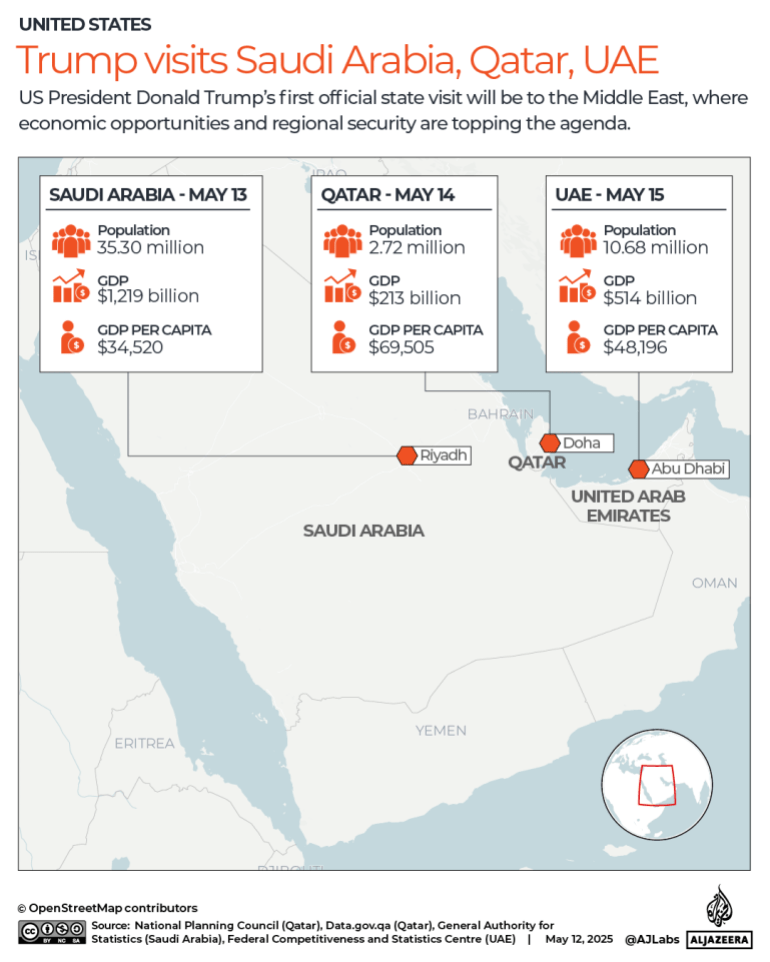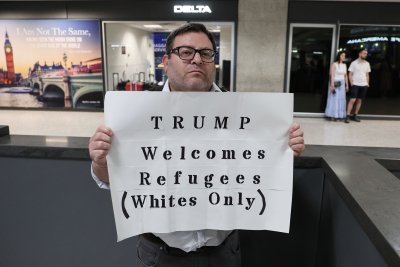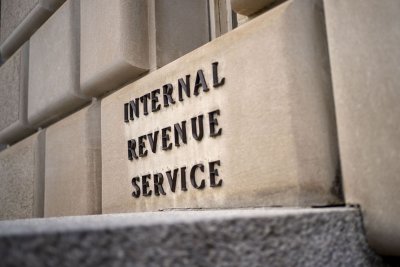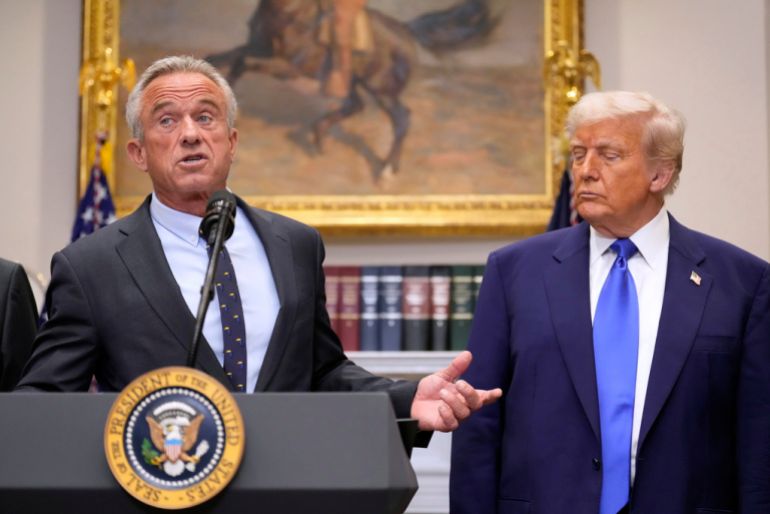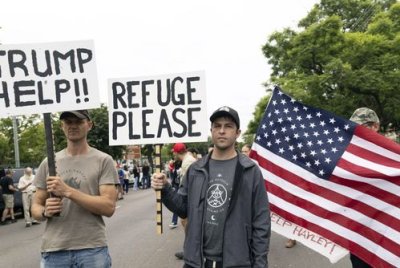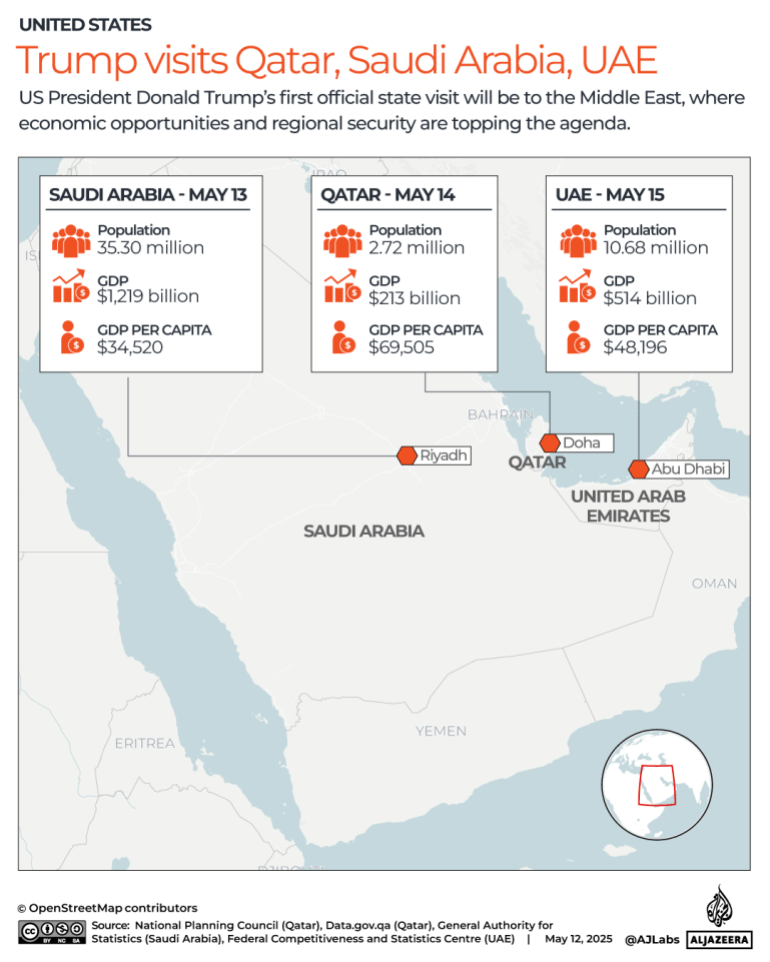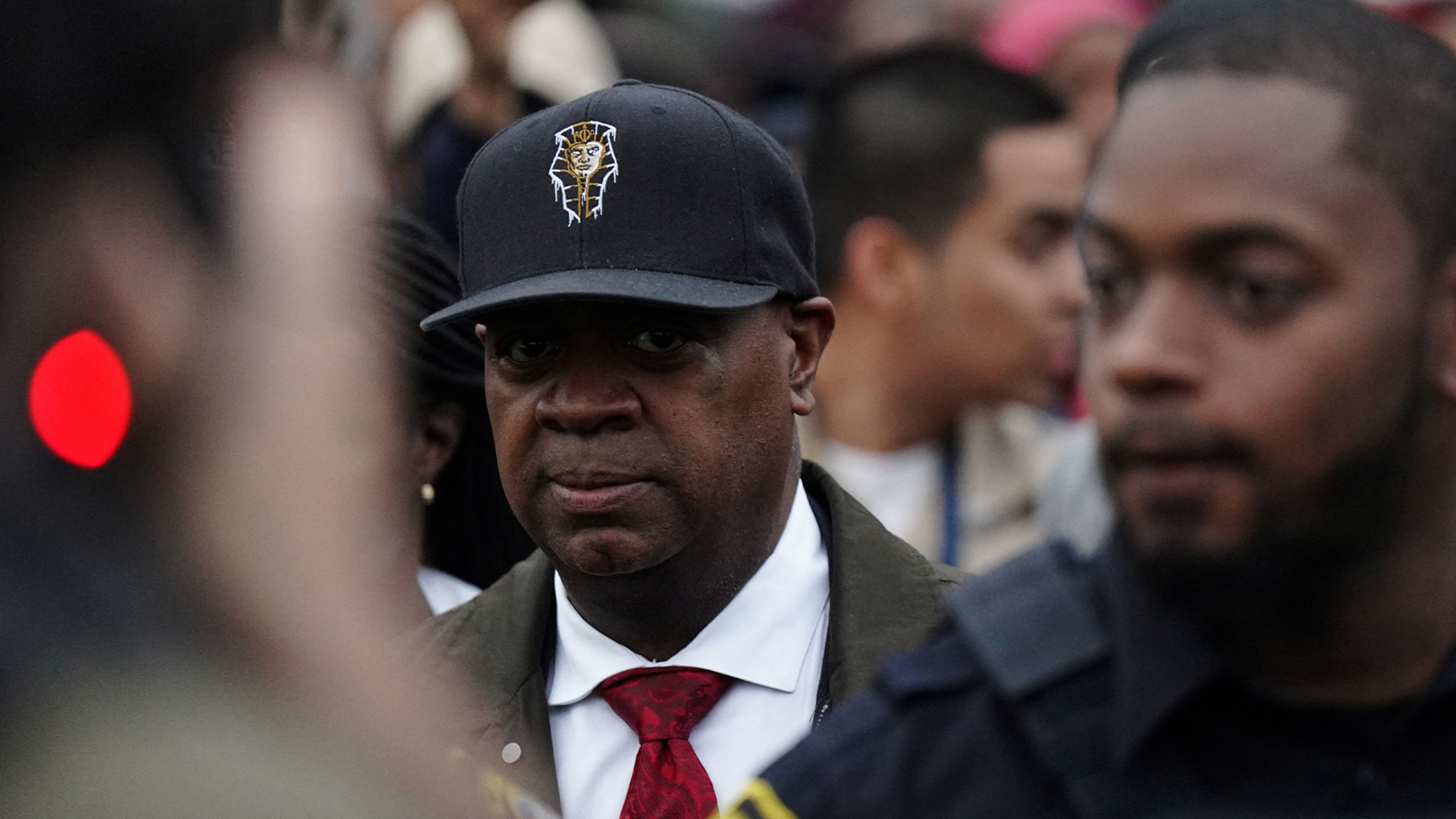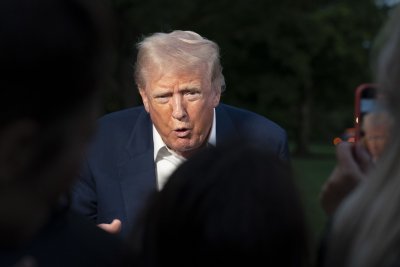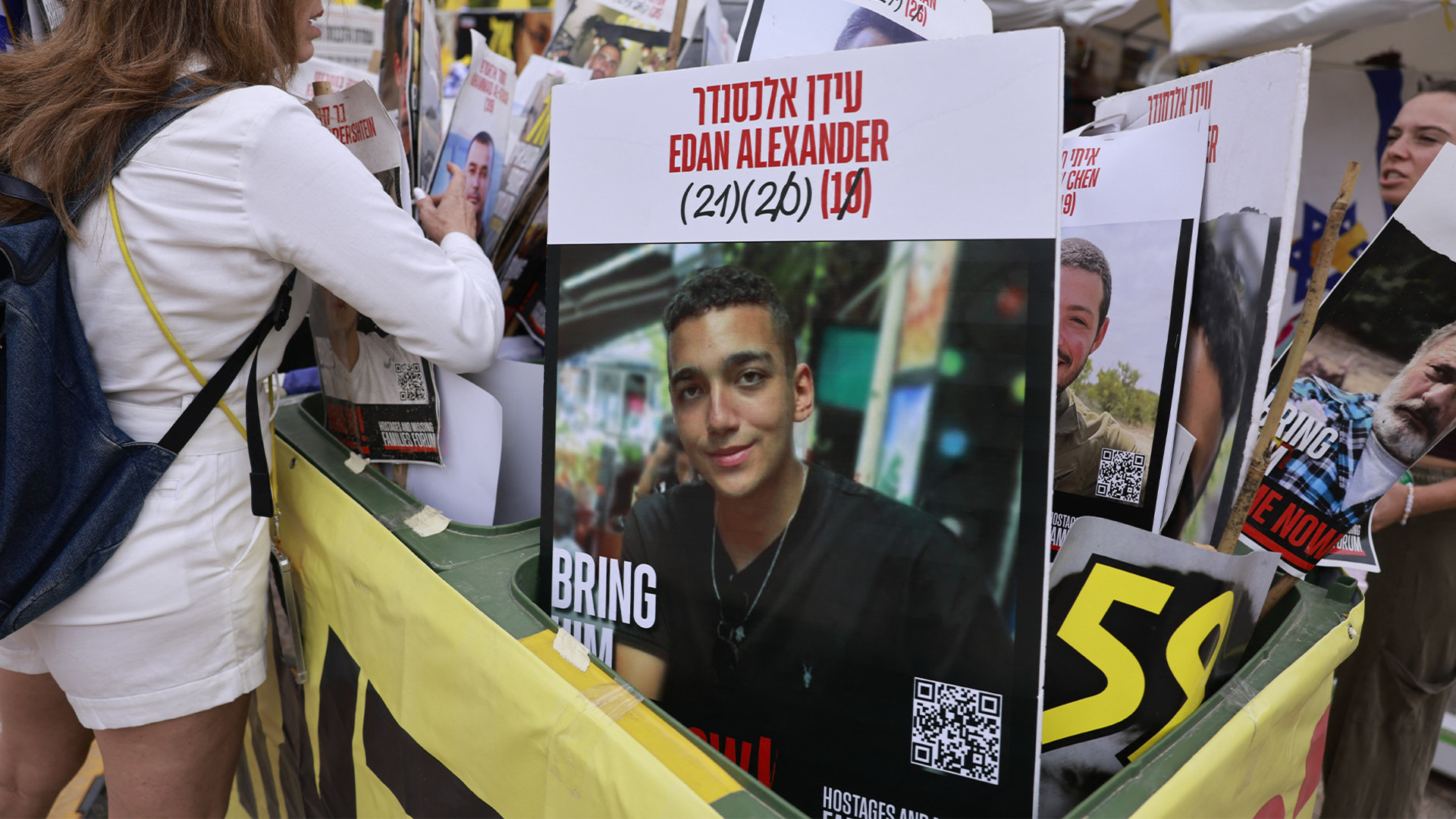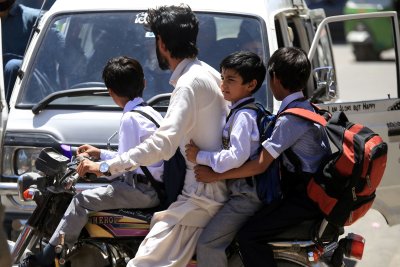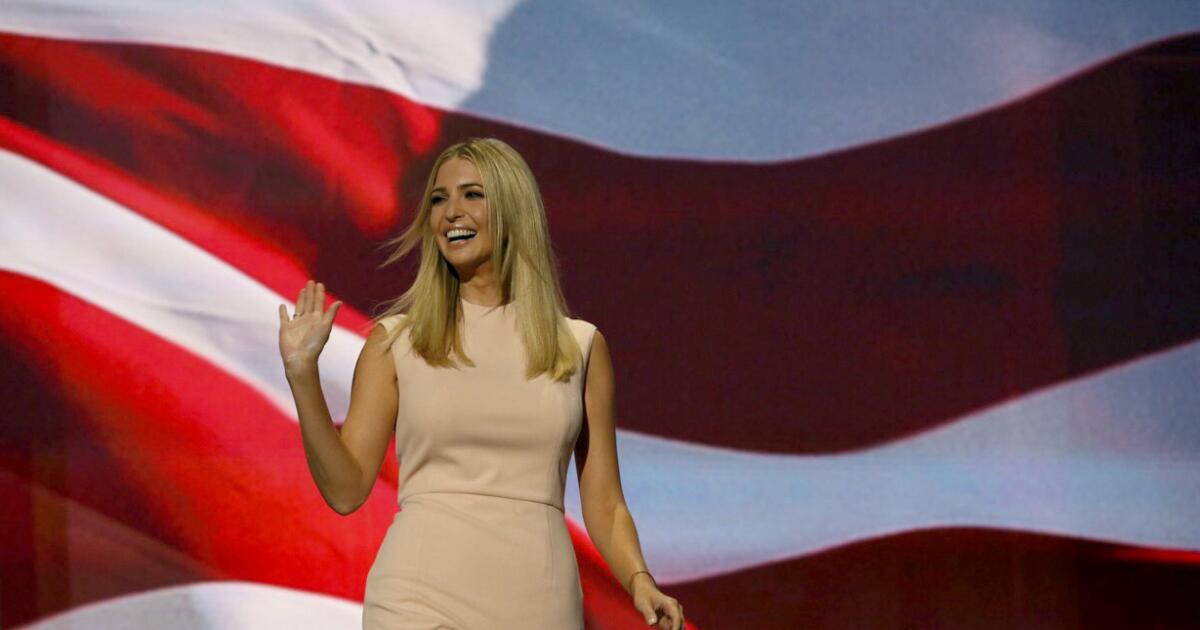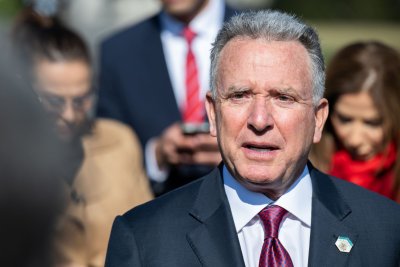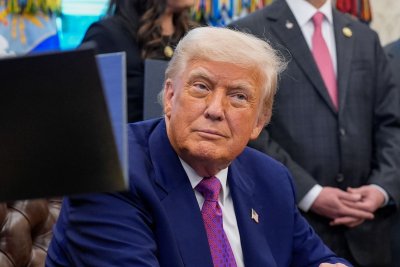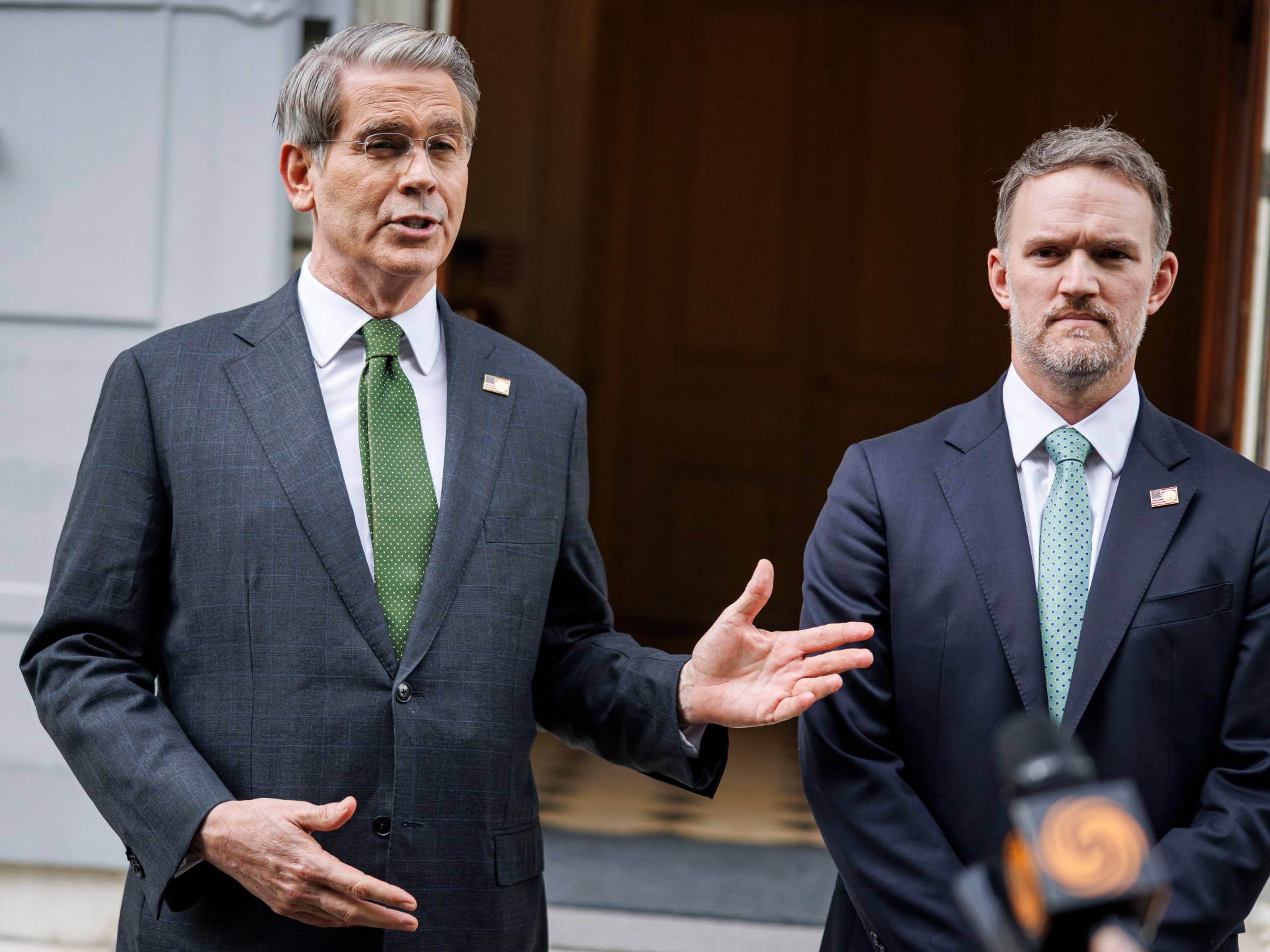Trump in the Middle East: How much are US-Gulf investments worth? | Donald Trump News
United States President Donald Trump has started his Middle East tour, arriving in Riyadh, Saudi Arabia, just after 10am, where he was greeted by Crown Prince Mohammed bin Salman (MBS).
During his three-day trip, he will also travel to Qatar and the United Arab Emirates (UAE), with a focus on securing economic agreements with three of the world’s wealthiest nations.
The trip will involve discussions on investment opportunities, and some experts say Trump may urge the Gulf countries to lower oil prices.
When will Trump be visiting each country?
Trump arrived in Riyadh, Saudi Arabia, on Tuesday just before 10am local time (07:00 GMT), where he was greeted by MBS. The same day, he is scheduled to attend a Saudi-US investment forum featuring leading companies such as BlackRock, Citigroup, Palantir, Qualcomm, and Alphabet.
On Wednesday, he is scheduled to take part in a Gulf summit in Riyadh, before travelling to Qatar later that day. He will conclude his trip in the UAE on Thursday, May 15.

Trump’s first visit as president was to Saudi Arabia
During his first term, 2017 to 2021, Trump became the first US president to make the Middle East his first international destination, breaking with the longstanding tradition of visiting neighbouring North American countries first.
His trip to Saudi Arabia from May 20 to 22, 2017 – during which he attended the Riyadh Summit – was a calculated move to bolster defence ties and secure substantial arms deals.
During that trip, Trump also visited Israel and Palestine.

While Trump did not go to Qatar or the UAE during his first term, he met Qatar’s Emir Sheikh Tamim bin Hamad Al Thani, Bahrain’s King Hamad bin Isa Al Khalifa and Egyptian President Abdel Fattah el-Sisi at the Riyadh Summit.
During the summit, Trump and Saudi King Salman bin Abdul Aziz Al Saud signed a $110bn arms deal, including missile defence systems, tanks, combat ships and cybersecurity technology, with the intent of buying $350bn worth of arms over 10 years.
A memorable moment from that 2017 trip to Saudi Arabia was during the inauguration of the Global Center for Combating Extremist Ideology in Riyadh. In a surreal photo op that quickly went viral, Trump stood alongside King Salman and President el-Sisi with their hands on a glowing orb.

What is the value of US-Gulf investments?
Sami al-Arian, director of the Center for Islam and Global Affairs at Istanbul Zaim University, told Al Jazeera that Trump has been very vocal about his objective in visiting the three Gulf states: investments.
Trump’s administration has reportedly discussed the possibility of expediting investments by Saudi Arabia, Qatar and the UAE before his trip to the region.
“He’s trying to get trillions of dollars out of these countries,” al-Arian told Al Jazeera.
“He’s already said that he’s hoping to get $1 trillion from Saudi Arabia in terms of arms sales and commercial deals,” he said.
US-Saudi investments
According to the latest data from the US Department of Commerce, the total stock of US foreign direct investment (FDI) in Saudi Arabia reached $11.3bn in 2023.
Conversely, Saudi Arabia’s FDI stock in the US stood at $9.6bn, mostly in transport, real estate, plastics, automotive, financial services and communications, according to the Commerce Department.
These figures are only FDI, not other investments, like portfolio investments or short-term financial flows.
US-Qatar investments
In 2023, the total stock of US FDI in Qatar was estimated at $2.5bn.
According to the US-Qatar Business Council, US companies that have facilitated FDIs in Qatar focused on the fields of energy, petrochemicals, construction, engineering, and communications technology.
Conversely, Qatari FDI stock in the US reached $3.3bn in 2023, with investments concentrated in financial services, energy and real estate.
US-UAE investments
In 2023, the total stock of US FDI in the UAE reached $16.1bn.
According to the Reuters news agency, in 2023, the main FDI drivers were manufacturing, finance and insurance, construction and wholesale and retail trade sectors.
Meanwhile, UAE FDI stock in the US totalled $35bn in 2023 – in financial services, transport, food and beverages, aerospace, and business services, according to the Commerce Department.
In March, UAE National Security Adviser Tahnoon bin Zayed Al Nahyan met Trump and committed $1.4 trillion in investments to the US over 10 years in sectors such as artificial intelligence, semiconductors, energy and manufacturing.
Weapons trade between the nations
The US is the biggest exporter of arms globally and a top supplier to Gulf countries.
Qatar and Saudi Arabia each accounted for 6.8 percent of the world’s total arms imports for 2020-24, making them the third and fourth largest importers globally.
The UAE is the 11th largest importer of arms, accounting for 2.6 percent of global imports for the same period.
Saudi Arabia is the main recipient of US arms, according to the Stockholm International Peace Research Institute (SIPRI). Between 2020 and 2024, Saudi Arabia received 12 percent of the US’s total arms exports.
About 74 percent of Saudi arms imports come from the US.
Trump is poised to offer Saudi Arabia an arms package worth more than $100bn during his trip, according to Reuters.
In the 2020-24 period, the US was the top supplier of arms to Qatar, accounting for 48 percent of its imports.
In March, the US Department of State approved a large weapons package to Qatar worth $2bn, which includes long-range maritime surveillance drones and hundreds of missiles and bombs.
In the same period, the US was also the top supplier of weapons to the UAE, accounting for 42 percent of the country’s arms imports.
